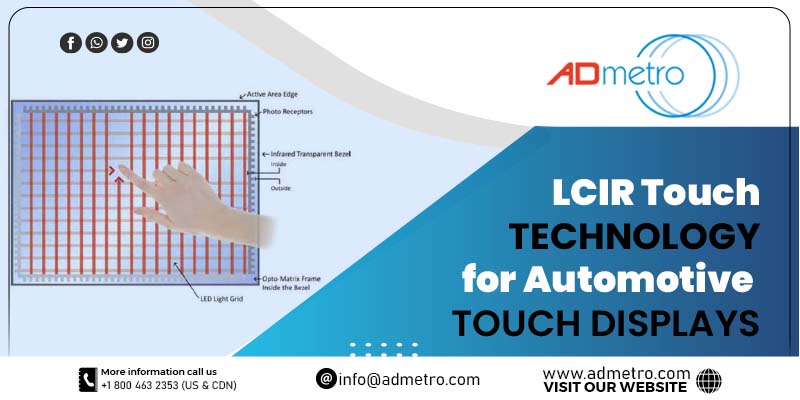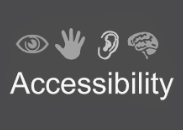Touch displays in automobiles are not new. In fact, the 1986 Buick Riviera was the first production automobile featuring a touch screen. It had a CRT touch display which was pretty decent to use. However, it took decades for touch screens to be good enough to be extensively used in automobiles. Now the demand for touch screens in cars is ever-increasing.
Almost every automobile today, from high-end luxury cars to basic vehicles, has a touchscreen display. Touch sensors are extensively integrated into today’s cars, middle/central console, rear mirror, overhead panel, backseat entertainment, door panel, steering wheel, etc.
These rapid changes in automotive displays have stemmed from the development of an innovative range of touch screen technologies like capacitive and Infrared (IR) touch screens. Touch screen displays come with a simple design and mount, open-source software, low power consumption and HMI (Human Machine Interface). Now, automotive manufacturers are designing more and more touch sensors in their vehicles.
Requirements of automotive display systems
Automobiles remain exposed to different environments and weather conditions. Therefore, the displays to be used in automotive are typically required to be more rugged and have wider temperature performance ranges. As a part of a vehicle, the displays are exposed to extreme road vibration and environmental settings like direct sunlight, extreme hot and cold.
Furthermore, automotive displays require increased brightness for improved sunlight readability as the sunlight hitting through the window panes makes it hard to read the display content.
On the other hand, reliability in automotive displays is particularly critical because driver distraction due to insufficient display contrast can lead to accidents. Moreover, the touch displays in vehicles also need to be responsive to touch with both gloved and bare fingers. Removing gloves to operate the display can distract the driver from driving.
The Ideal Touch Screen Solution for Automotive
For all the above-mentioned requirements, the most ideal touch screen solution is A D Metro’s Linear Correlating Infrared (LCIR) touch technology which is an advanced version of IR/Infrared touch screens. The LCIR touch screens are fitted with responsive and accurate single and two-touch functions that are perfect for navigation applications.
The LCIR touch technology offered by A D Metro is an excellent alternative for touch screens requiring multi-touch features but having difficulty integrating the widely used Projected Capacitive (PCAP) touch screens.
How A D Metro’s LCIR Helps Designing Perfect Touch Displays for Vehicles?
Linear Correlating Infrared (LCIR) touch technology functions seamlessly even when exposed to challenging environments such as strong radio frequency interference (RFI) and bright sunlight interference, including strobing sunlight.
A D Metro’s LCIR touch sensor technology helps avoid the readability issue in automotive. Integrating the LCIR touch technology in the vehicle display systems offers the following:
- As there is no substrate in the LCIR touch sensor, the display has 100% optical clarity/maximum contrast;
- 100% sunlight immunity to enable operation in any light conditions;
- 100% EMI and RFI immunity so there will be no loss of touch response;
- Reliable two-touch functionality helpful for navigation applications;
- Glove and 5mm Stylus compatibility allow operating the display without distractions.
Conclusion:
With the increasing demand for automotive displays, A D Metro’s innovative LCIR touch technology not only helps eliminate sunlight readability issues but also elevates the usage of Infrared (IR) touch screens.
For more information, log on to https://admetro.com/.







